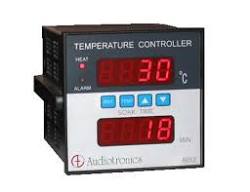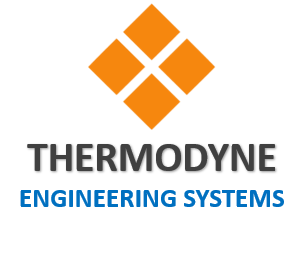Table of Contents
What is a Temperature Controller
Temperature controllers are devices that maintain a specific temperature in a given setting or process. They do this by constantly monitoring the current temperature and making adjustments as needed to keep the temperature within a narrow range.
In steam boilers, temperature controllers are essential for regulating and stabilizing the steam temperature. They do this by collecting temperature data from sensors placed inside the boiler or steam lines. Based on this data, the controller activates different boiler components, such as burners or heaters, to increase or decrease heat input, keeping the steam temperature on target.
Temperature controllers can operate in different modes, such as proportional-integral-derivative (PID) control. PID control takes into account the current error (difference between desired and actual temperature), past error history, and rate of error change. This fine-tuned control helps to prevent temperature fluctuations.
In short, temperature controllers are essential for ensuring that industrial systems like steam boilers can consistently reach and maintain desired temperatures. This contributes to better performance, energy efficiency, and operational safety.

Understanding Temperature Controllers
Temperature controllers are electronic devices designed to maintain a specific temperature setpoint by adjusting the heat input to a system. In the context of steam boilers, these controllers are vital for ensuring that the temperature of the steam produced remains stable and within the desired range. Temperature controllers achieve this through various mechanisms and components, each serving a specific purpose in the control process.
The Components of a Temperature Controller
A temperature controller consists of several key components that work harmoniously to achieve precise temperature regulation. These components include:
- Temperature Sensor: The heart of the temperature controller, this sensor measures the actual temperature of the steam. Common types of temperature sensors used in steam boilers include thermocouples and resistance temperature detectors (RTDs).
- Microprocessor: Acting as the brain of the controller, the microprocessor processes the temperature data from the sensor and compares it to the desired setpoint.
- Output Control Element: This element is responsible for adjusting the heat input to the boiler based on the information received from the microprocessor. It can be a relay, a solid-state switch, or a proportional control valve.
Types of Temperature Controllers
Temperature controllers come in various types, each tailored to specific applications and control requirements. Some commonly used types include:
1. On/Off Temperature Controllers
On/Off temperature controllers are the simplest type, often used in basic applications where precise control is not critical. When the measured temperature deviates from the setpoint, the controller either turns the heating element on or off to bring the temperature back to the desired level.
2. Proportional Temperature Controllers
Proportional temperature controllers provide a more refined approach to temperature regulation. They use a proportional control algorithm to adjust the heating element’s output based on the difference between the measured temperature and the setpoint. As the temperature approaches the setpoint, the controller reduces the heat input to prevent overshooting.
3. PID Temperature Controllers
PID (Proportional, Integral, Derivative) controllers are the most advanced and widely used type in steam boiler applications. They combine proportional control, integral control, and derivative control to achieve precise and stable temperature regulation. PID controllers continuously adjust the heat input, making them highly accurate and efficient.
How Temperature Controllers Work in Steam Boilers
Now that we have a fundamental understanding of temperature controllers and their components, let’s explore how they operate in steam boilers.
- Temperature Measurement: The process begins with the temperature sensor measuring the actual steam temperature within the boiler. The sensor relays this data to the microprocessor.
- Comparison and Analysis: The microprocessor compares the measured temperature with the desired setpoint, making necessary calculations to determine the deviation.
- Control Decision: Based on the comparison, the microprocessor decides on the appropriate action to take to bring the temperature back to the setpoint. For instance, in a PID controller, the algorithm considers the proportional, integral, and derivative terms to calculate the control output.
- Heat Adjustment: The output control element receives the control signal from the microprocessor and adjusts the heat input accordingly. If more heat is needed, the element increases the heat supply, while if less heat is required, it reduces the supply.
- Feedback Loop: This process continues in a continuous feedback loop, with the temperature controller making real-time adjustments to maintain the steam temperature at the desired setpoint.
The Importance of Temperature Controllers in Steam Boilers
Temperature controllers are of paramount importance in steam boilers for several reasons:
- Energy Efficiency: Proper temperature control ensures that the boiler operates at the most efficient level, minimizing energy wastage and reducing operational costs.
- Safety: Maintaining a stable steam temperature prevents overheating, which can lead to dangerous situations such as boiler explosions.
- Consistent Performance: Temperature controllers ensure that the steam output remains consistent, optimizing the boiler’s overall performance.
Advantages and Benefits of Using Temperature Controllers
Using temperature controllers in steam boilers offers numerous advantages and benefits:
- Precision: Temperature controllers enable precise and accurate temperature regulation, leading to enhanced system performance.
- Automation: Once set, temperature controllers can operate autonomously, reducing the need for manual intervention.
- Remote Monitoring: Advanced temperature controllers can be integrated with monitoring systems, allowing operators to oversee the boiler’s performance remotely.
- Extended Equipment Life: Proper temperature control prevents excessive wear and tear on boiler components, extending their lifespan.
- Cost Savings: Increased energy efficiency results in reduced fuel consumption, leading to significant cost savings over time.
We provide Boiler Temperature Indicator Controller that are known for their high performance and accuracy.
Buy Boiler Spare Parts at the Best Price
Thermodyne Boilers supplies 100+ Industrial Boiler Parts all over India. Contact our sales team & send your requirement to get prices & discounts
TIC(Temperature Indicator Controller) FAQ
A TIC is a temperature indicator controller. It is a device that measures and controls temperature. TICs are used in a variety of industries, including manufacturing, food processing, and healthcare.
The full form of TIC is Temperature Indicator Controller.
There are two main types of TICs: analog TICs and digital TICs. Analog TICs use a needle to indicate the temperature, while digital TICs use a digital display.
TICs offer a number of benefits, including:
Improved accuracy and consistency in temperature control
Reduced risk of product spoilage or damage
Increased productivity and efficiency
Improved safety
When choosing a TIC, you need to consider the following factors:
The type of process you are using the TIC for
The accuracy and precision you need
The environment in which the TIC will be used
The budget you have available
TICs are relatively easy to install and maintain. The specific instructions will vary depending on the type of TIC you have.
Some common problems with TICs include:
inaccurate readings
malfunctions
sensor failure
If you are having problems with your TIC, you can try the following troubleshooting steps:
Check the sensor for damage or corrosion
Check the wiring for loose connections
Calibrate the TIC
Replace the sensor
TICs are available from a variety of suppliers, including online retailers and industrial supply stores.
The cost of a TIC will vary depending on the type of TIC, the features it has, and the supplier from whom you purchase it.
